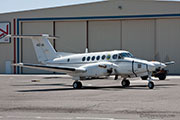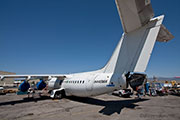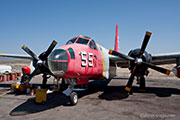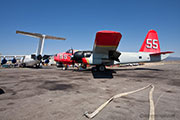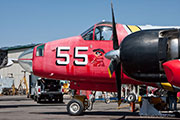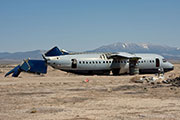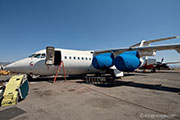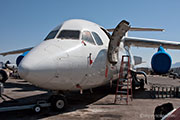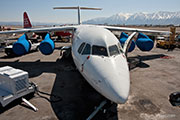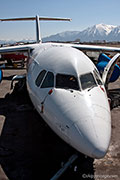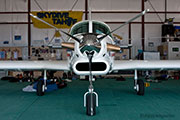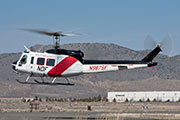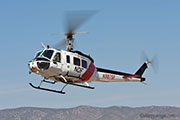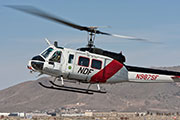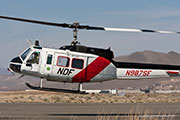After a couple of fatal crashes in the last two years involving P-2 Neptunes the project that Minden Air Corp are working on could seem all the more relevent.
There have been a couple of false starts to finding a more up to date replacement for the aging firefighting fleet currently flying in the USA. Within the last five years the fleet has been decimated with groundings of civilian operated C-130 Hercules and PB4Y-2 Privateers which caused Hawkins and Powers to close their business.
Since then the most prevalent fixed wing assets outside of California are ex military P-3 Orions and P-2 Neptunes.
The Dash 8 has been thought about while the DC-10 and Boeing 747 have had varying successes although the larger aircraft are obviously limited to flatter and more wide open terrain.
Leonard Parker, CEO of Minden Air Corp (MAC), has however been on a quest to find a perfect replacement and is always sizing up potential type to fit this niche role.
Enter the BAe146 - Hawker Siddeley's answer to high density regional and short-haul routes for the airliners. The type proved pivotal in the success of London City Airport with its ability to land steep, short and be quiet at the same time.
In recent years the type has fallen out of favour with the airlines as they have replaced the aircraft with twin engined turboprop commuters.
Talking to Operations Manager Timothy Christy, the thought at MAC is that BAe inadvertently designed the perfect aircraft for the fire fighting role, which I'll try to outline below.
Typical flight scenarios have already been flown with BAe test pilots and the aircraft has performed very well. The aircraft is relatively simple to operate and maintain as it has no leading edge slats, good flaps, a simple engine with no reverse and strong gear for short or unimproved fields. The 146 is also self sufficient in its operation which is very important as they migrate around the current air tanker bases - it's a very similar size to the Neptune so fits perfectly into the existing infrastructure.
Four engines is a huge asset as if you loose one engine in a gully it's not nearly as critical as a Neptune flying on just one engine. The decent rate easily beats the Neptune without acceleration coupled with the very effective airbrake.
MAC are planning to operate with 3000 gallons of retardant (P-2 is 2100 and P-3 is 2500) which is the same as the grounded C-130s used to operate with, so again the numbers seem to fit.
The retardant tank will be fitted into the belly and hot-loads will possibly be via the old toilet outlet at the rear, which is accessible from both sides.
MAC hope to have the conversion ready for the 2010 season and with many airframes now in storage, maybe we will see a resurgence of the little four engined British jet.
